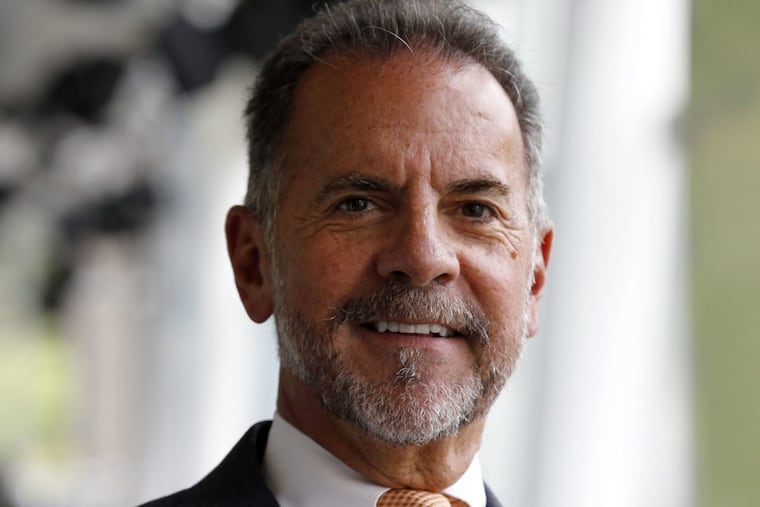WHYY's Marrazzo tops in pay among peer public broadcasting chiefs
Marrazo's $757,164 in total pay for 2015 was the highest among peer broadcasters, but his pay trailed that of WNYC chief executive Laura R. Walker, whose total compensation was $864,515 in 2015.

WHYY's president and chief executive, William J. Marrazzo, received $757,164 in total compensation in 2015, tops among public-television peers in Boston, Washington, and Dallas, as WHYY added to a run of profitable years while the others posted losses, nonprofit organizations' latest financial disclosures show.
Marrazzo's reported compensation included two years' worth of bonuses — $85,000 for 2014 and $101,000 for 2015 — because WHYY changed when it pays bonuses. Reported compensation is for calendar years.
Fred Sutherland, chairman of WHYY's board of directors, said Marrazzo, who has led WHYY for nearly 20 years, deserved the pay.
"Bill has a very, very strong record of accomplishment," Sutherland said. The last time WHYY had a loss was in fiscal 2009, "when the world was coming to an end for everybody.".
Being consistently profitable is not the norm in an industry where many public media affiliates lose money year after year, said Sutherland, formerly the longtime chief financial officer at Aramark.
"You have to run it like a business. We don't generate a very big surplus, but the rule is, we've got to generate a surplus year after year to be viable," Sutherland said.
Public broadcasters in Boston, New York, Washington, and Dallas had net losses in fiscal 2016, while WHYY had a $2.6 million profit.
That profit was not much more than the $2.48 million WHYY received from the Corporation for Public Broadcasting, which the Trump administration wants to stop funding.
Sutherland also highlighted the fact that WHYY is at a record high for members — 114,705 — and that the percentage of expenses going to production of content increased to an estimated 71.2 percent in the fiscal year that just ended, from 58 percent in fiscal 2005. General and administrative expenses have fallen to an estimated 7.2 percent in fiscal 2017 from 18 percent in fiscal 2005, according to internal WHYY data.
The WHYY board sets Marrazzo's pay with the help of a consultant who creates an index of pay at public media organizations, nonprofit educational institutions, and cultural organizations in the Philadelphia region, such as the Philadelphia Museum of Art and the Philadelphia Orchestra, Sutherland said.
"We shoot for the 70-75 percentile. He is pretty much on that target," Sutherland said.
Philadelphia Orchestra president and chief executive Allison Vulgamore was paid $776,143 in 2014, the latest year available. Timothy Rub, CEO of the Philadelphia Museum of Art, received $556,796 in total compensation in 2014. Marrazzo's total pay that year was $606,422.
Marrazzo's pay is often compared to that of New York Public Radio's CEO Laura R. Walker, though the organizations are different because New York Public Radio only has radio operations, but it still has more than double the revenue. Walker's pay in 2015 was $864,515, 14 percent more than Marrazzo's.
New York Public Radio had $82 million in revenue and $91 million net assets in fiscal 2016, compared with $35 million in revenue and $27 million in assets for WHYY, audited financial statements show.
Other public broadcasters with both radio and television licenses include WGBH in Boston, WETA in Washington, KERA in Dallas, and KQED in San Francisco. Of those stations, only KERA in Dallas had lower revenue, reporting $21.5 million in fiscal 2016.
The biggest of those stations is WGBH in Boston, which, unlike WHYY, is also a big national television producer. It had $179 million in revenue and $348 million in assets. WGBH CEO Jonathan C. Abbott was paid $624,930 in 2015, the organization's tax return said.
Marrazzo's 2015 pay was first reported by BillyPenn and Philadelphia Magazine.